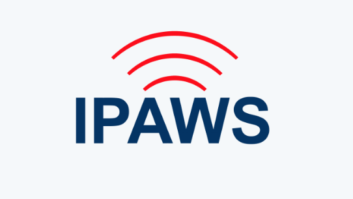Listen up, New England.
This Thursday, New England broadcast engineers and technicians can participate in the second of two technical webinars on the regional IPAWS emergency alert system used by FEMA. Specifically, the webinar will look at the results of the first IPAWS test, held last September, as well as prep for the next test, set for Wednesday Sept. 16.
The goal is to organize a nationwide test of the IPAWS system.
“Participation in the test is important as it represents an opportunity for a station to confirm how their EAS equipment will perform when it receives a National Periodic Test (NPT) EAS message from FEMA’s IPAWS in a no-fault environment,” said Al Kenyon, IPAWS team engineer.
The benefit of a test like this, he said, is that it’s a freebie with no enforcement risk.
“Once the rule changes based on the FCC’s Sixth Report and Order on EAS go into effect, broadcasters will not only be required to rebroadcast NPT messages, they will also have to self-report their success to the FCC,” Kenyon said.
Those changes are expected to go into effect on July 30, 2016.
Thursday’s webinar will outline how the Sept. 16 test will be conducted, and provide information regarding EAS device configuration in preparation for the test for stations in the areas of Connecticut, Maine, Massachusetts, New Hampshire, Rhode Island and Vermont. The technical webinar will also discuss the technical side of IPAWS and offer step-by-step instructions for configuring EAS devices.
The webinar will begin at 10 a.m. Eastern on Thursday Sept. 4. Attendees can link to the webinar or call 650-479-3207 (with the access code 662 930 173). The webinars will also be recorded for later viewing.
FEMA is conducting this series of IPAWS tests in cooperation with state broadcast associations, the National Cable and Telecommunications Association, the American Cable Association, and state emergency management agencies.












